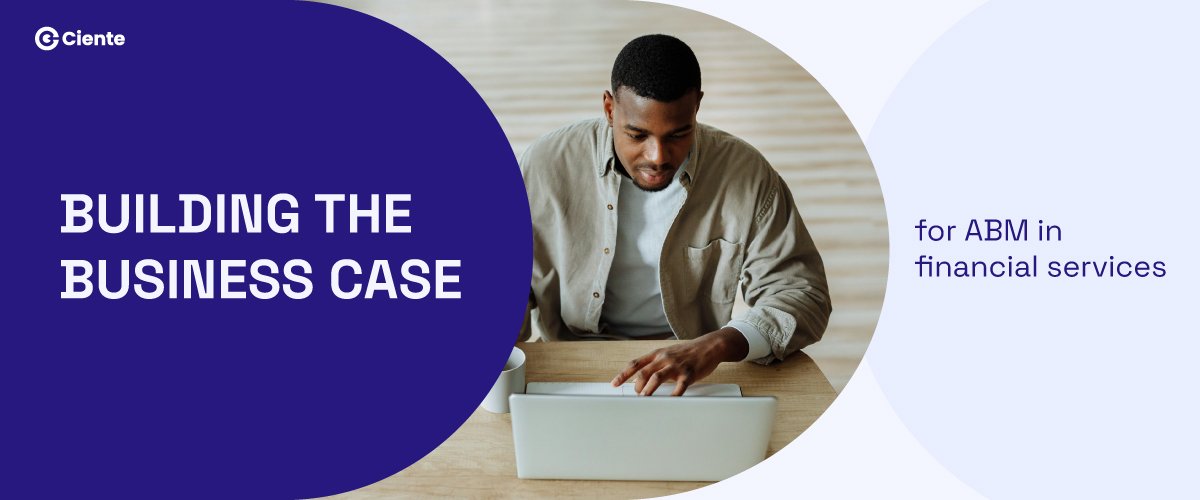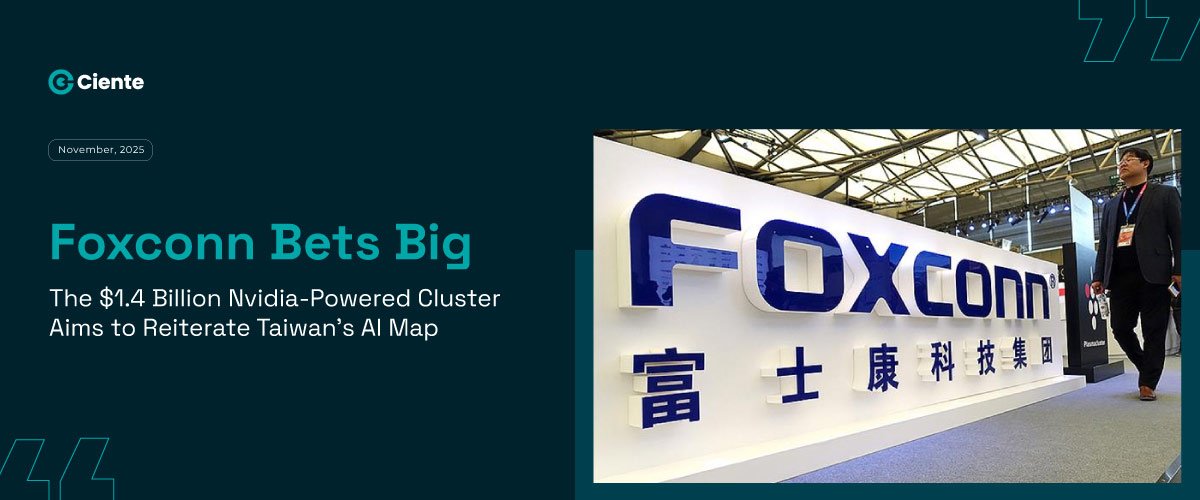Building the business case for ABM in financial services
Most “business case” blogs are written by people who have never had to stare down a skeptical CFO and explain why “brand awareness” matters. This isn’t one of those blogs. This is about survival in a market defined by fear.
You have likely spent hours scrolling through LinkedIn, reading “thought leaders” talk about the magic of Account-Based Marketing (ABM). They talk about personalization at scale. They talk about “delighting the customer.”
And if you take that language into a boardroom of a Fintech company, you will fail.
Why? Because financial services aren’t selling socks, and it isn’t selling project management software. It is selling security. It is selling the promise that money—the lifeblood of any organization—won’t disappear overnight.
The stakes are perceived to be higher than they are. And because of that, the standard marketing playbooks don’t just fail; they look like negligence.
If you want to build a business case for ABM in this industry, you have to stop acting like a marketer and start acting like a risk mitigation. You have to understand that the “Customer Journey” everyone talks about is a lie. The real journey is hidden, political, and terrified of change.
Let’s walk through what is actually happening, and how ABM is the only logical response to it.
The Hidden Customer Journey in Fintech: Beyond Standard Lead Gen
Let’s be honest about the state of the industry. The tech world is saturated. Tools like Lovable and other no-code solutions have doubled the speed to production. Every day, a new neo-bank or payment processor pops up, claiming to be faster, cheaper, and more “AI-driven” than the incumbents.
So, who wins?
The standard answer is “the best product.” The real answer is “the vendor who gains trust”.
But gaining trust in Fintech is an uphill battle against gravity. Buyers are cynical. A simple Google search reveals horror stories of fintech failures. Research like this dominates their mind. They aren’t asking, “Does this feature work?” They are asking, “Will this company exist in six months?” or “Why should we trust you when you can fail?”.
This fear drives the “Hidden Journey.” The customer journey of your prospect is so unknown that you are mostly making guesses. You might see a download or a webinar attendance, but you don’t see the conversations happening in dark social channels, or the Slack DMs between the CTO and the CFO.
Standard lead generation (inbound/outbound) cannot penetrate this. It waits for the buyer to raise their hand. But in Fintech, by the time they raise their hand, they have already decided who they trust. And if you weren’t part of that hidden conversation, it’s not you.
This is the first pillar of your business case: Standard marketing targets the behavior we can see. ABM targets the fear we can’t see.
Navigating Internal Politics and B2B Decision Makers (The “Roommate Theory”)
This is the part that usually gets left out of the boardroom presentation, but it is the most critical factor in B2B sales.
Let’s say you are a neo-bank offering better interest rates and security for employee savings. It’s a great product. The value prop is undeniable. You pitch it to the XYZ company.
And they say no.
Why? Was the product bad? Was the price too high?
No. You lost because you couldn’t identify the internal politics that avoid the change.
You didn’t know that the CFO, who holds the purse strings, was roommates in college with the founder of your competitor. You didn’t know that the CEO is risk-averse because their last vendor got hacked, and they promised the board “no more startups.”
You cannot see this. Not unless you send a spy inside the organization.
Since corporate espionage is illegal (and generally bad for brand reputation), you need a legal alternative. That is ABM.
ABM isn’t just “targeting accounts.” It is a tool to uncover the hidden aspects of the buyer’s journey. It helps you solidify your answer to the question: “Why them and not us?”.
By mapping the “Buying Committee”—understanding exactly who the decision-makers are and what makes them tick —you gain leverage. You realize that to win this deal, you don’t need to convince the company; you need to arm your champion with an argument that dismantles the “roommate bias.”
When you present this to your leadership, frame it this way: We are losing deals to internal politics we don’t understand. ABM is the intelligence layer that exposes those politics.
Engaging the Entire Buying Committee: A Multi-Threading Strategy
Let’s dig deeper into this “Buying Committee” problem, because it is where most Fintech marketing dollars go to die.
ABM is essentially multi-threading. It is the act of unifying different perspectives to create a message that lands with everyone, not just your point of contact.
Imagine you are a Fintech like Wise, processing cross-border payments.
- You entice the CEO with “Growth.”
- You entice the CFO with “Low Forex Fees.”
Great. You have 2 out of 11 committee members.
But what about the CTO? While the CEO is dreaming of expansion, the CTO is panicking. He has identified that integrating you into the stack is problematic. He is questioning your security features, your transfer protocols, and the surface area for cyberattacks.
If you are running a standard marketing campaign, you might never even target the CTO. You assume the CEO makes the call.
By the time the sales meeting happens, the CTO has already killed the deal in a private email to the CEO. You are too late. You should have answered the questions before the first touchpoint.
ABM requires you to answer these objections before they are raised. It demands that you create content specifically for the CTO’s fears, even if the CTO never fills out a form.
When the committee meets to decide, it must be challenging for any one party to negate you. They would need a solid reason not to onboard you.
This is the second pillar of your business case: We need to win the argument in the room when we aren’t in the room.
Using ABM for Product Intelligence and Market Feedback
Here is where you pivot the conversation from “Marketing Spend” to “Company Strategy.”
Most executives view marketing as a one-way street: We build the product -> Marketing tells people about it.
This is a recipe for disaster in Fintech. The market is moving too fast.
ABM, if done right, changes the direction of the data. It flows backwards.
When you run a hyper-targeted ABM campaign, you will realize the true gap in your product. Your salespeople will receive feedback that is a goldmine for the product team.
Because you are targeting high-value accounts with specific problems, the rejection isn’t generic. It’s specific.
- “We didn’t buy because your API doesn’t support Protocol X.”
- “We didn’t buy because your security compliance lacks SOC 2 Type II.”
This data empowers your product managers to understand the micro-problems plaguing the product. Is it security? Is it transfer rates?
If you can verify this, you can iterate around it.
This turns Marketing into a strategic management system. It makes your department a consulting company within the organization. You aren’t just bringing in leads; you are diagnosing why the business isn’t growing faster.
The Business Case: “ABM isn’t just about sales. It is about Product-Market Fit validation.”
The Financials of ABM: Optimizing CAC and LTV Ratios
Now, we have to talk about the money. Because eventually, the CFO will ask: “Is this expensive?”
Yes. It is. ABM is budget-intensive. It requires heavy market research, intelligence, and execution tools. If you try to do this on the cheap, or with an agency that doesn’t understand the nuance, you will fail.
But let’s look at the alternative.
The anecdotal wisdom says your CAC:CLV ratio should be 1:3. For every dollar you spend, three must be gained back. But in Fintech, relying on “volume” marketing balloons your CAC very quickly.
Why? Because of the “Churn Treadmill.” If you acquire customers who don’t trust you, or who aren’t a perfect fit, they leave. And in Fintech, where trust is a finite resource, a churned customer is often a loud detractor.
Standard marketing is “Spray and Pray.” You pay for 1,000 clicks to get 10 leads to get 1 customer. ABM is “Sniper Fire.” You pay more per target, but you waste zero dollars on people who can’t buy.
If you focus on standard lead-gen, you are optimizing for meetings. If you focus on ABM, you are optimizing for revenue.
The “Time-to-Close” metric is crucial here. Internal politics and security reviews drag out deals for months. ABM shortens this cycle by addressing the “Dark Social” and “Hidden Objections” upfront.
If you can reduce the sales cycle by 20%, the higher upfront cost of ABM pays for itself immediately.
Conclusion: Why Trust is the Critical Asset in Fintech Marketing
The industry has begun its upward ascent. The opportunity is right there, and the piece of the pie is huge. Look at Stripe—there’s a possibility here that it’s just the beginning.
But the trillion-dollar market cap will only be pushed if the industry understands and uncovers what its buyers want.
The buyers want to feel acknowledged and secure. They want to know that when the world becomes volatile (VUCA), your bank or software won’t fail them.
People lost businesses because banks didn’t bail them out. Fintech did. This is your play.
ABM has to position your organization as a fail-safe. It builds the context that allows trust to flourish.
So, when you submit your budget request, don’t just attach a spreadsheet of ad spend. Attach a manifesto.
Tell them that the era of “generating leads” is over. Tell them that the era of “generating trust” has begun. Tell them that we are done guessing at the customer journey.
We are going to map the politics. We are going to debug the product. And we are going to dominate the market share.
That is the business case. Everything else is just noise.






